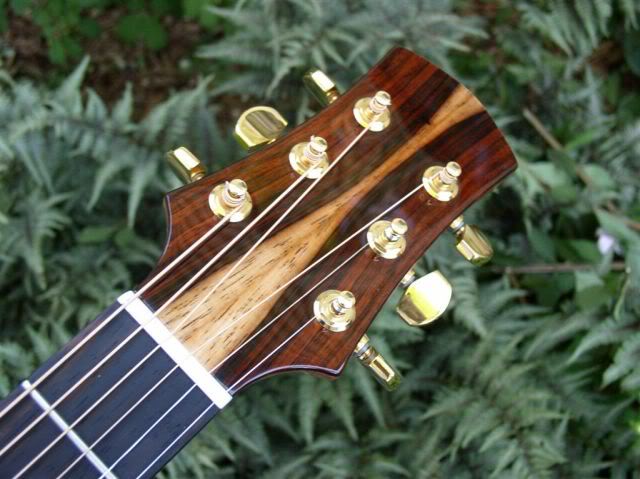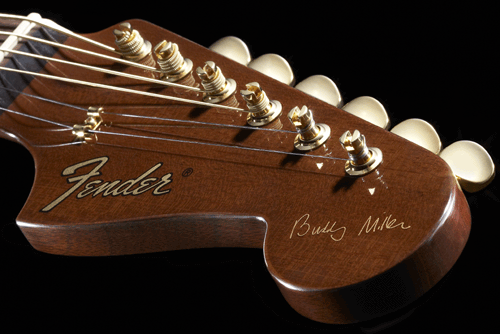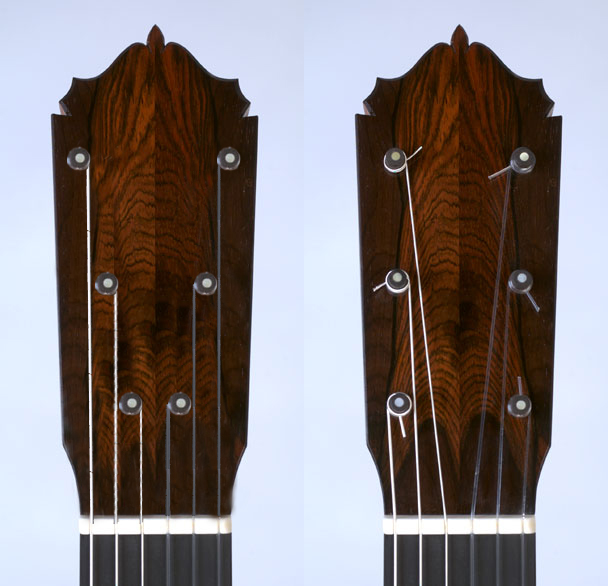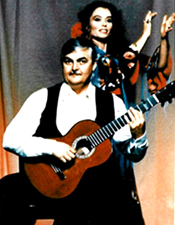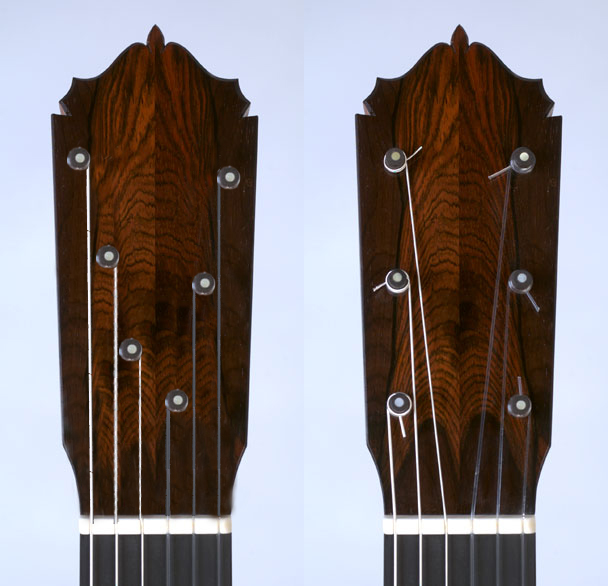|
Mohan -> RE: Positioning of pegs in the headstock (Apr. 24 2010 7:51:24)
|
Hi Stephen,
Thanks for your reply. I agree with you that you wouldn't be able to apply this to 3-on-a-plate tuners - I have some other thoughts on how it might be possible to straighten the string direction for these type of tuners.
But for wooden and mechanical pegs, there is nothing stopping us but the thought of "breaking with tradition" - I had to chuckle at your "hypertensive cow" comment[:D]
However, if there were enough advantages to offsetting the pegs, then eventually people may become more open to the idea - cf. sound ports - they are now becoming more and more acceptable and accepted...
Advantages to offsetting pegs could/would be:
- as you mentioned, less chance of inner strings jumping out of the nut groove,
especially under heavy rasgueados with open D &/or G strings
- easier tuning because the strings are less likely to catch in the nut groove
- strings returning to their "home" position after string bends (not used often in
flamenco, I know, but it does happen)
- all strings wound in the same direction on the pegs, so less chance of turning the
pegs the wrong way when tuning - this always happens to me
- it might be possible to make the head smaller and so even lighter
And lastly, and this is just my personal belief, the traditional pegheads tend in general to be very plain looking - dare I say it: a little dull? Repositioning the pegs could allow use of new, more interesting, exciting head designs (e.g. the shape used on PRS electric guitars). The acoustic guitar headstock example I showed above uses a wedge shaped contrast strip in the middle to make the offset less optically obvious...
I would be interested to hear how other forum members feel about moving away from the traditional peghead's peg layout - would they buy such a guitar? Do they agree with the advantages that I listed above?
|
|
|
|
